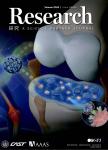Machine Learning in Predicting Printable Biomaterial Formulations for Direct Ink Writing
作者机构:Department of Mechanical EngineeringUniversity College LondonLondonUK Department of Computer ScienceUniversity College LondonLondonUK Wellcome-EPSRC Centre for Interventional Surgical Sciences(WEISS)University College LondonLondonUK.
出 版 物:《Research》 (研究(英文))
年 卷 期:2023年第2023卷第4期
页 面:105-115页
核心收录:
学科分类:12[管理学] 1201[管理学-管理科学与工程(可授管理学、工学学位)] 081104[工学-模式识别与智能系统] 08[工学] 0835[工学-软件工程] 0811[工学-控制科学与工程] 0812[工学-计算机科学与技术(可授工学、理学学位)]
基 金:The study was supported by University College London internal funds
主 题:printing formulation biomaterials
摘 要:Three-dimensional(3D)printing is emerging as a transformative technology for biomedical *** 3D printed product can be patient-specific by allowing customizability and direct control of the *** trial-and-error approach currently used for developing the composition of printable inks is time-and resource-consuming due to the increasing number of variables requiring expert *** intelligence has the potential to reshape the ink development process by forming a predictive model for printability from experimental *** this paper,we constructed machine learning(ML)algorithms including decision tree,random forest(RF),and deep learning(DL)to predict the printability of biomaterials.A total of 210 formulations including 16 different bioactive and smart materials and 4 solvents were 3D printed,and their printability was *** ML methods were able to learn and predict the printability of a variety of inks based on their biomaterial *** particular,the RF algorithm has achieved the highest accuracy(88.1%),precision(90.6%),and F1 score(87.0%),indicating the best overall performance out of the 3 algorithms,while DL has the highest recall(87.3%).Furthermore,the ML algorithms have predicted the printability window of biomaterials to guide the ink *** printability map generated with DL has finer granularity than other *** has proven to be an effective and novel strategy for developing biomaterial formulations with desired 3D printability for biomedical engineering applications.



